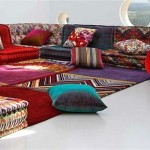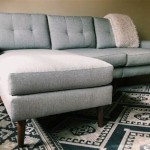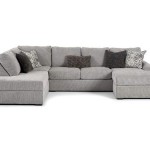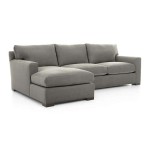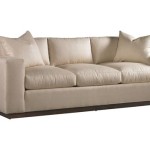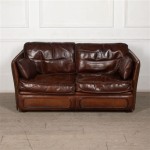The Ultimate Guide to Choosing the Best Pet-Friendly Sofa Bed
The integration of pets into modern households has fostered a significant demand for home furnishings designed to withstand the unique challenges posed by animal companions. Among these furnishings, the sofa bed stands out as a particularly valuable piece, offering both seating and sleeping arrangements, often in space-constrained environments. Selecting a pet-friendly sofa bed necessitates careful consideration of materials, construction, and ease of maintenance to ensure longevity and a comfortable living space for both humans and their furry friends.
This article provides a comprehensive overview of the factors to consider when choosing a pet-friendly sofa bed, focusing on key features that contribute to durability, cleanliness, and overall suitability for homes with pets. Topics covered include material selection, frame and construction considerations, ease of cleaning, and additional features that can enhance the sofa bed’s pet-friendliness.
Material Selection: A Critical Factor in Pet-Friendliness
The choice of upholstery material is paramount when selecting a sofa bed for a pet-friendly home. Certain materials are inherently more resistant to scratches, stains, and pet hair than others. Understanding the properties of various fabrics can significantly extend the lifespan of the sofa bed and minimize the effort required for upkeep.
Microfiber, often made from polyester, is a consistently recommended option for pet owners. Its tightly woven fibers create a smooth surface that is less susceptible to snagging by claws. Additionally, microfiber is generally water-resistant and easy to clean, making it a practical choice for managing spills and accidents. The durability of microfiber also ensures that it can withstand the wear and tear associated with pet activity, such as jumping and scratching.
Leather, particularly treated leather, presents another viable alternative. While more expensive upfront, leather is exceptionally durable and can develop a desirable patina over time. Its smooth surface prevents pet hair from becoming deeply embedded, and spills can typically be wiped clean with a damp cloth. However, it is important to select a leather product specifically treated to resist scratches and stains, as untreated leather can be more vulnerable to damage.
Canvas is another solid contender. Its tight weave and natural durability make it a resilient option for pet owners. While canvas may not be as inherently water-resistant as microfiber or leather, it can be treated with stain-resistant coatings to enhance its ease of cleaning. The relatively affordable nature of canvas also makes it an attractive option for budget-conscious consumers.
Fabrics to avoid include those with loose weaves, such as tweed or chenille. These materials are highly susceptible to snagging and unraveling due to pet claws. Similarly, delicate fabrics like silk or velvet are impractical choices due to their vulnerability to stains, scratches, and general wear and tear. Selecting the right material dramatically impacts the longevity and appearance of the sofa bed in a pet-friendly environment.
Frame and Construction: Ensuring Durability and Stability
Beyond the upholstery, the frame and construction of the sofa bed are crucial factors in its overall durability and ability to withstand the rigors of a pet-filled household. A robust frame is essential for providing adequate support and preventing structural damage from pet activity.
Hardwood frames, particularly those made from kiln-dried hardwoods like oak or maple, are generally considered to be the most durable option. Kiln-drying removes moisture from the wood, reducing the risk of warping or cracking over time. A solid hardwood frame can withstand significant weight and pressure, ensuring that the sofa bed remains stable and functional for years to come. Avoid frames made from particleboard or plywood, as these materials are less resilient and more prone to damage.
The construction of the frame is also important. Look for frames with reinforced joints, such as those that are corner-blocked, glued, and screwed together. These construction techniques enhance the structural integrity of the frame and minimize the likelihood of it becoming loose or unstable. The spring system within the sofa bed also contributes to its durability and comfort. Eight-way hand-tied springs are considered to be the gold standard, providing consistent support and preventing sagging. However, sinuous springs, also known as no-sag springs, can be a more affordable and still reasonably durable alternative.
Pay close attention to the legs of the sofa bed as well. Solid wood or metal legs are preferable to plastic legs, as they offer greater stability and prevent the sofa bed from wobbling. The legs should be securely attached to the frame and capable of supporting the weight of the frame, cushions, and occupants, including pets. A well-constructed frame and robust legs are critical for ensuring the long-term durability and stability of the sofa bed in a pet-friendly home.
Cleaning and Maintenance: Practical Considerations for Pet Owners
Even with the most durable materials and robust construction, regular cleaning and maintenance are essential for keeping a pet-friendly sofa bed in good condition. Choosing a sofa bed that is easy to clean and maintain will significantly reduce the effort required to keep it looking its best and minimize the accumulation of pet hair, dander, and odors.
Removable and washable cushion covers are a highly desirable feature. Being able to remove the cushion covers and launder them in a washing machine makes it much easier to remove stains and odors. Check the care instructions for the fabric to ensure that it is machine washable and dryer-safe. If the cushion covers are not machine washable, consider spot-cleaning them with a mild detergent and water or having them professionally cleaned.
Regular vacuuming is also crucial for removing pet hair and dander. Use a vacuum cleaner with an upholstery attachment to thoroughly clean the sofa bed, paying particular attention to crevices and corners where pet hair tends to accumulate. A pet hair remover brush or lint roller can also be helpful for removing stubborn pet hair from the upholstery. Consider investing in a handheld vacuum specifically designed for pet hair removal, as these often come with specialized attachments that are particularly effective at lifting embedded hair.
Dealing with stains promptly is essential for preventing them from becoming permanent. Blot up spills immediately with a clean cloth. Avoid rubbing the stain, as this can spread it and make it more difficult to remove. Use a stain remover specifically designed for the type of fabric on the sofa bed. Always test the stain remover in an inconspicuous area first to ensure that it does not damage or discolor the fabric.
Consider using a fabric protector spray to help repel stains and water. These sprays can create a barrier that prevents liquids from penetrating the fabric, making it easier to clean up spills. Reapply the fabric protector spray periodically, according to the manufacturer's instructions. Regular cleaning and maintenance will not only keep the sofa bed looking its best but also help to prevent the buildup of allergens and odors, creating a healthier living environment for both humans and pets.
Beyond the factors already mentioned, several additional considerations can enhance the pet-friendliness of a sofa bed. The design of the sofa bed itself can play a role. A sofa bed with a low profile may be easier for smaller or older pets to access. Avoiding excessive tufting or detailing can minimize areas where pet hair can become trapped. Darker upholstery colors can also help to camouflage pet hair and stains.
Investing in pet-specific furniture covers or throws can provide an extra layer of protection for the sofa bed. These covers can be easily removed and washed, further simplifying the cleaning process. Consider placing a pet bed or blanket near the sofa bed to encourage your pet to use it instead of the sofa itself. Providing alternative resting places can help to reduce wear and tear on the sofa bed and minimize the amount of pet hair that accumulates on it.
Finally, establishing clear boundaries with your pet is essential. Train your pet to avoid scratching or jumping on the sofa bed. Use positive reinforcement methods to reward your pet for good behavior. With careful material selection, a durable frame, regular cleaning, and appropriate training, a pet-friendly sofa bed can be a valuable addition to any home with animal companions, providing both comfort and functionality for years to come.

14 Pet Friendly Couches In 2025 Best For Dog And Cat Owners

7 Best Pet Friendly Couches For Dogs And Cats

A Guide For Pet Owners On How To Find Friendly Sofa

Best Dog Friendly Sofa Fabrics

The Best Pet Family Friendly Sofas You Can Buy Now Maxine Brady Interior Stylist Props Creative Director Home Decor Blogger

Build A Pet Friendly Home

7 Best Pet Friendly Couches For Dog Owners
The Best Kid And Pet Friendly Sofas You Can Buy Now

Best Pet Friendly Couches 25 Things To Know Before

5 Best Bets For Creating A Stylish Pet Friendly Home Ethan Allen The Art Of Making

